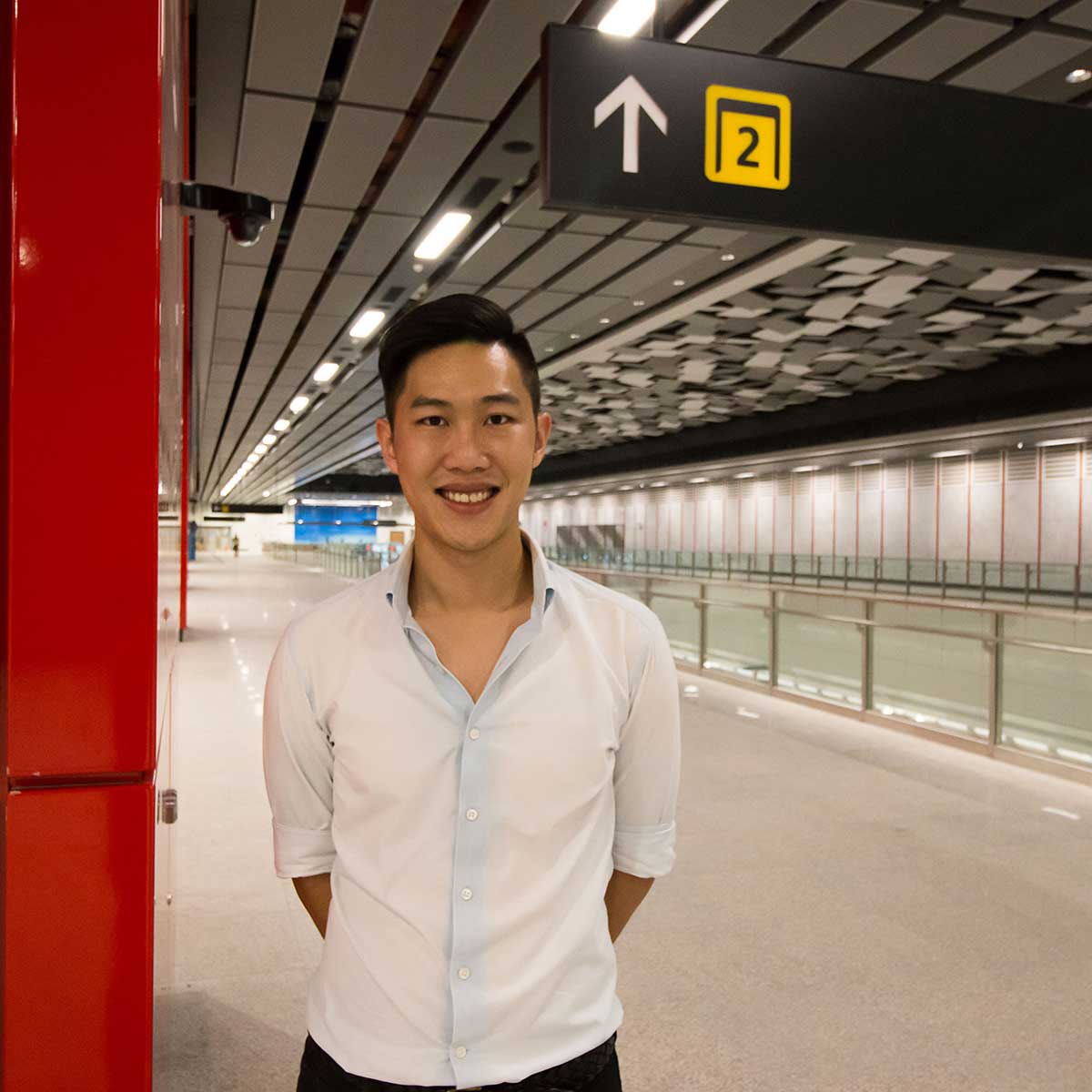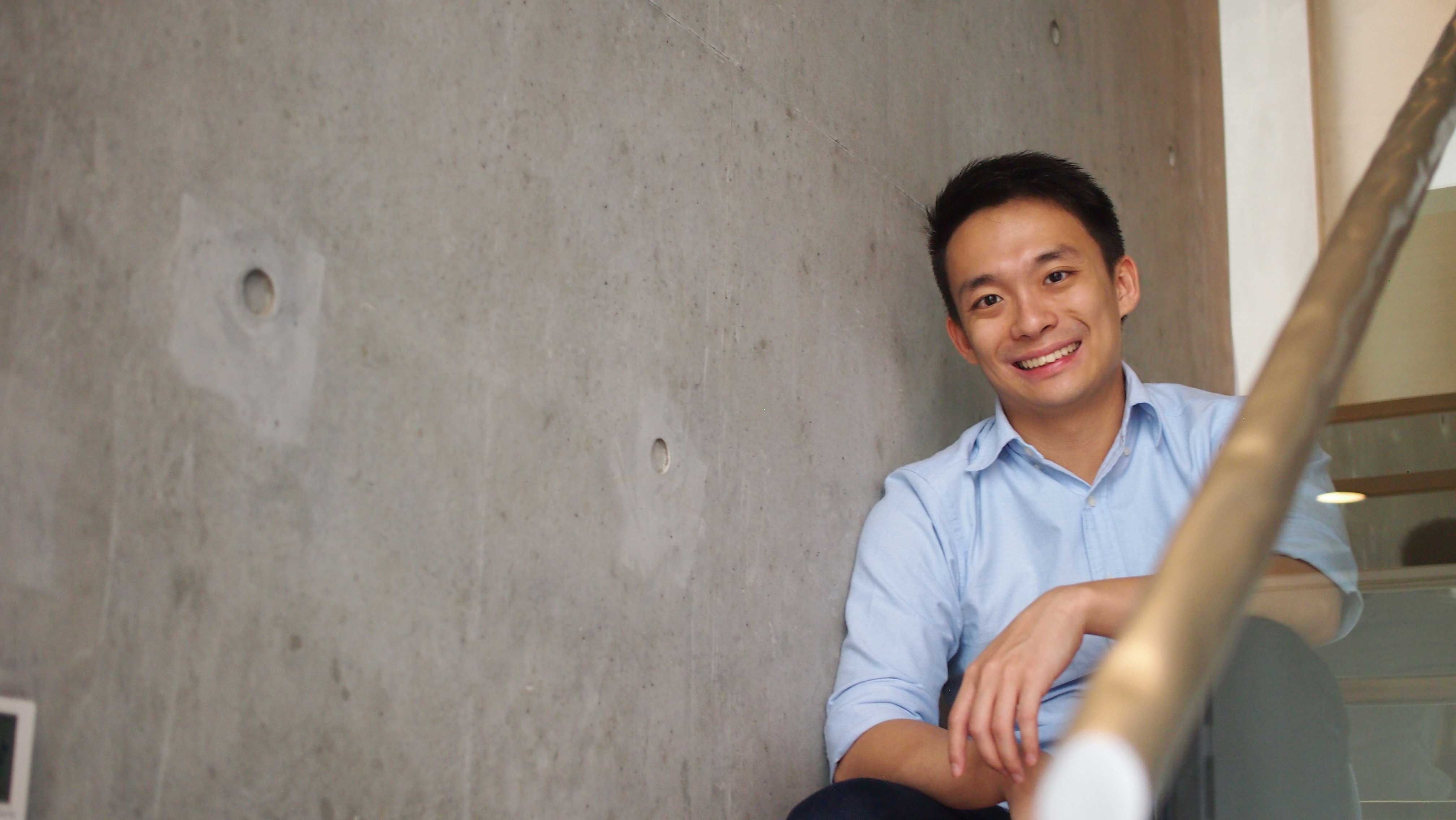Civil engineering is one of the oldest professions in the world. There will always be a demand for buildings and infrastructure. As a civil engineer, you know that your work will leave a lasting impact on society and the environment.
- Kiu Yan Ru
Young professionals like Kiu Yan Ru and Lim Ming Han are the kind of engineering talents that Singapore is built on. From the HDB towns that we reside in to mass mover transportation system like our MRT, the country we know today would be a different place without the hard work and ingenuity of skilled engineers.
Here, our two up and coming engineers gave their take on what inspired them to take up engineering as a career and what excites them most about the future of built environment in Singapore.
|
|
 Yan Ru took pride in seeing Woodlands North MRT station, a project he worked on for five years, come to life. The new station is located in the neighbourhood where he grew up and lived for 26 years. Yan Ru took pride in seeing Woodlands North MRT station, a project he worked on for five years, come to life. The new station is located in the neighbourhood where he grew up and lived for 26 years.
|
|
Kiu Yan Ru, 30
Civil & Structural Engineer at Arup Singapore
Built Environment Young Leaders Programme
“Engineering was not my first choice of career. When I was young, I wanted to be a professional musician. But when I had the chance to pursue music during my National Service, I came to realise that doing it full time was very different to when I was doing it as a hobby. On the advice from my parents and mentors, I eventually decided to pursue engineering. I was good in physics and maths so it was a natural choice for me.
Civil engineering is one of the oldest professions in the world. There will always be a demand for buildings and infrastructure. As a civil engineer, you know that your work will leave a lasting impact on society and the environment. I enrolled into the Master of Science in Civil Engineering course at NUS within a few months of starting work in the industry. While my undergraduate course had laid the necessary foundation, some of the projects I was handling were technically complex and challenging, so I knew I had to upgrade my skillset.
The Woodlands North MRT station on the recently opened Thomson-East Coast Line was my baby. In the five years spent working on it, I was fascinated by how much consideration went into developing an infrastructure project like a MRT station. You had to take into account the larger national agenda, the system’s operational needs as well as the interests of the users. Even the politics of our neighbouring country has an influence because the station is slated to be the interchange and terminus for the Johor Bahru-Singapore Rapid Transit System Link!
Infrastructural projects tend to have a longer gestation period, so the challenge for millennials like me is trying to sustain the passion and consistency in my daily work. But the rewards come in knowing that good infrastructure is inextricably linked to people’s well-being as well as access to education and livelihoods. In this way, I use my engineering knowledge to help shape better cities and enhance the fabric of society.”
|
|
 As a young engineer, Ming Han is excited by the opportunities and challenges of working in the Built Environment sector. The chance to solve real-world problems every day means that no two days are ever the same! As a young engineer, Ming Han is excited by the opportunities and challenges of working in the Built Environment sector. The chance to solve real-world problems every day means that no two days are ever the same!
|
|
Lim Ming Han, 29
Senior Project Engineer at KTC Civil Engineering and Construction
Built Environment Future Leaders Network
“I am a practical person by nature. Since I was young, I was always drawn towards problems that required me to find practical solutions. Growing up in Singapore, I witnessed the rapid development of our island’s physical landscape and infrastructure into the key regional hub that we see today. All this could not have happened without the well-thought out urban development and planning that went on behind the scenes. It inspired and made me want to be part of the industry.
To me, this is an exciting time to be in the built environment sector. The current generation of engineers is in a transition phase, moving towards greater technology adoption and digitalisation. In project design and planning for instance, this means embracing 3D visualisation and technology. For example, using VR goggles to walk through 3D simulations of buildings is becoming commonplace in the industry.
In engineering, a lot of work can go on behind the scene which looks deceptively simple on the surface. The covered linkways which connect a MRT station with the surrounding amenities for example. It is something most of us take for granted but the coordination involved is no less intense.
People have the misconception that engineering is a dull profession. That’s not true. In fact, no two days are ever the same for me! I face different challenges each day. It goes back to what I enjoy about engineering – I get to solve real-world problems every day.”
Make a difference. Join the Built Environment sector today!